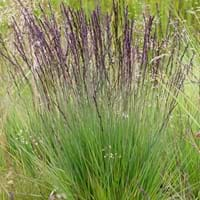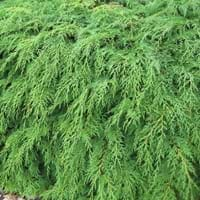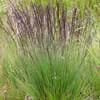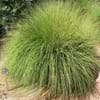Life Span
Perennial
Perennial
Type
Grass
Needled or Scaled Evergreen
Origin
Asia, Europe, North Africa
Russia/Siberia
Types
purple moor-grass 'Moorhexe', variegated purple moor-grass
Not available
Habitat
Boggy areas, Dry and Young forest Heaths, Lowland
Cold Regions
USDA Hardiness Zone
4-8
4-7
Sunset Zone
1a, 1b, 2a, 2b, 3a, 3b, 4, 5, 6, 7, 8, 9, 14, 15, 16, 17
A3, 1a, 1b, 2a, 2b, 3a, 3b, 4, 5, 6, 7, 8, 9, 10, 14, 15, 16, 17
Habit
Clump-Forming
Spreading
Flower Color
Dark Purple
Dark Green
Flower Color Modifier
Bicolor
Bicolor
Fruit Color
Non Fruiting Plant
Non Fruiting Plant
Leaf Color in Spring
Green, Dark Green
Green
Leaf Color in Summer
Light Green
Green, Dark Green
Leaf Color in Fall
Green, Yellow green, Gold
Green, Dark Green, Copper
Leaf Color in Winter
Tan
Purple, Sienna, Burgundy, Bronze
Leaf Shape
Needle like
Scale-like imbricate
Plant Season
Spring, Summer, Fall, Winter
Spring, Summer, Fall, Winter
Sunlight
Full Sun, Partial Sun
Full Sun, Partial Sun, Partial shade
Type of Soil
Clay, Loam, Sand
Clay, Loam
The pH of Soil
Acidic, Neutral
Acidic, Neutral
Soil Drainage
Average
Well drained
Bloom Time
Late Spring, Summer, Late Summer, Early Fall, Fall
Not Available
Tolerances
Not Available
Shade areas
Where to Plant?
Ground, Pot
Ground
How to Plant?
Divison, Transplanting, Vegetative Reproduction
Seedlings, Semi-hardwood cuttings
Plant Maintenance
Low
Low
Watering Requirements
Requires regular watering, Water more frequently during periods of extreme drought
Water during dry weather, Water occasionally
In Summer
Lots of watering
Lots of watering
In Spring
Moderate
Moderate
In Winter
Average Water
Average Water
Soil pH
Acidic, Neutral
Acidic, Neutral
Soil Type
Clay, Loam, Sand
Clay, Loam
Soil Drainage Capacity
Average
Well drained
Sun Exposure
Full Sun, Partial Sun
Full Sun, Partial Sun, Partial shade
Pruning
Prune in winter, Remove damaged leaves, Remove dead branches, Remove dead leaves
Remove damaged leaves, Remove dead branches, Remove dead leaves
Fertilizers
No need to fertilize every year
slow-release fertilizers
Pests and Diseases
Pests and diseases free
No serious insect or disease problems
Plant Tolerance
Not Available
Shade areas
Flowers
Showy
Insignificant
Flower Petal Number
Single
Single
Foliage Texture
Fine
Fine
Foliage Sheen
Matte
Matte
Attracts
Not Available
Bees, Butterflies, Hummingbirds
Allergy
Not Available
Not Available
Aesthetic Uses
Showy Purposes, Water gardening
Cottage Garden, Ground Cover
Beauty Benefits
Not Available
Not Available
Environmental Uses
No fertilizer, pesticides, or herbicides needed
Not Available
Medicinal Uses
No Medicinal Use
Not Available
Part of Plant Used
Whole plant
Not Available
Other Uses
Used as Ornamental plant
Used for bedding in gardens
Used As Indoor Plant
No
No
Used As Outdoor Plant
Yes
Yes
Garden Design
Container, Foundation, Mixed Border
Alpine, Edging, Feature Plant, Foundation, Groundcover, Mixed Border, Rock Garden, Wall
Botanical Name
Molinia caerulea
MICROBIOTA decussata
Common Name
purple moor-grass
Microbiota, Siberian carpet cypress, Russian arbor vitae
In Hindi
बैंगनी दलदल घास
माइक्रोबायोटा
In German
Pfeifengras
Mikrobiota
In French
pourpre lande-grass
microbiote
In Spanish
púrpura amarra-hierba
microbiota
In Greek
μωβ Moor-γρασίδι
μικροχλωρίδας
In Portuguese
purple moor-grass
microbiota
In Polish
fioletowy Moor-trawa
mikroflory
In Latin
Maurus herba-purpura,
Microbiota
Phylum
Magnoliophyta
Tracheophyta
Class
Liliopsida
Pinopsida
Family
Poaceae
Cupressaceae
Clade
Angiosperms, Commelinids, Monocots
Not Available
Tribe
Not Available
Not Available
Subfamily
Not Available
Not Available
Number of Species
Not Available
Season and Care of Molinia Caerulea and Microbiota
Season and care of Molinia Caerulea and Microbiota is important to know. While considering everything about Molinia Caerulea and Microbiota Care, growing season is an essential factor. Molinia Caerulea season is Spring, Summer, Fall and Winter and Microbiota season is Spring, Summer, Fall and Winter. The type of soil for Molinia Caerulea is Clay, Loam, Sand and for Microbiota is Clay, Loam while the PH of soil for Molinia Caerulea is Acidic, Neutral and for Microbiota is Acidic, Neutral.
Molinia Caerulea and Microbiota Physical Information
Molinia Caerulea and Microbiota physical information is very important for comparison. Molinia Caerulea height is 120.00 cm and width 30.00 cm whereas Microbiota height is 2,330.00 cm and width 120.00 cm. The color specification of Molinia Caerulea and Microbiota are as follows:
Molinia Caerulea flower color: Dark Purple
Molinia Caerulea leaf color: Green and Dark Green
Microbiota flower color: Dark Green
- Microbiota leaf color: Green
Care of Molinia Caerulea and Microbiota
Care of Molinia Caerulea and Microbiota include pruning, fertilizers, watering etc. Molinia Caerulea pruning is done Prune in winter, Remove damaged leaves, Remove dead branches and Remove dead leaves and Microbiota pruning is done Remove damaged leaves, Remove dead branches and Remove dead leaves. In summer Molinia Caerulea needs Lots of watering and in winter, it needs Average Water. Whereas, in summer Microbiota needs Lots of watering and in winter, it needs Average Water.





